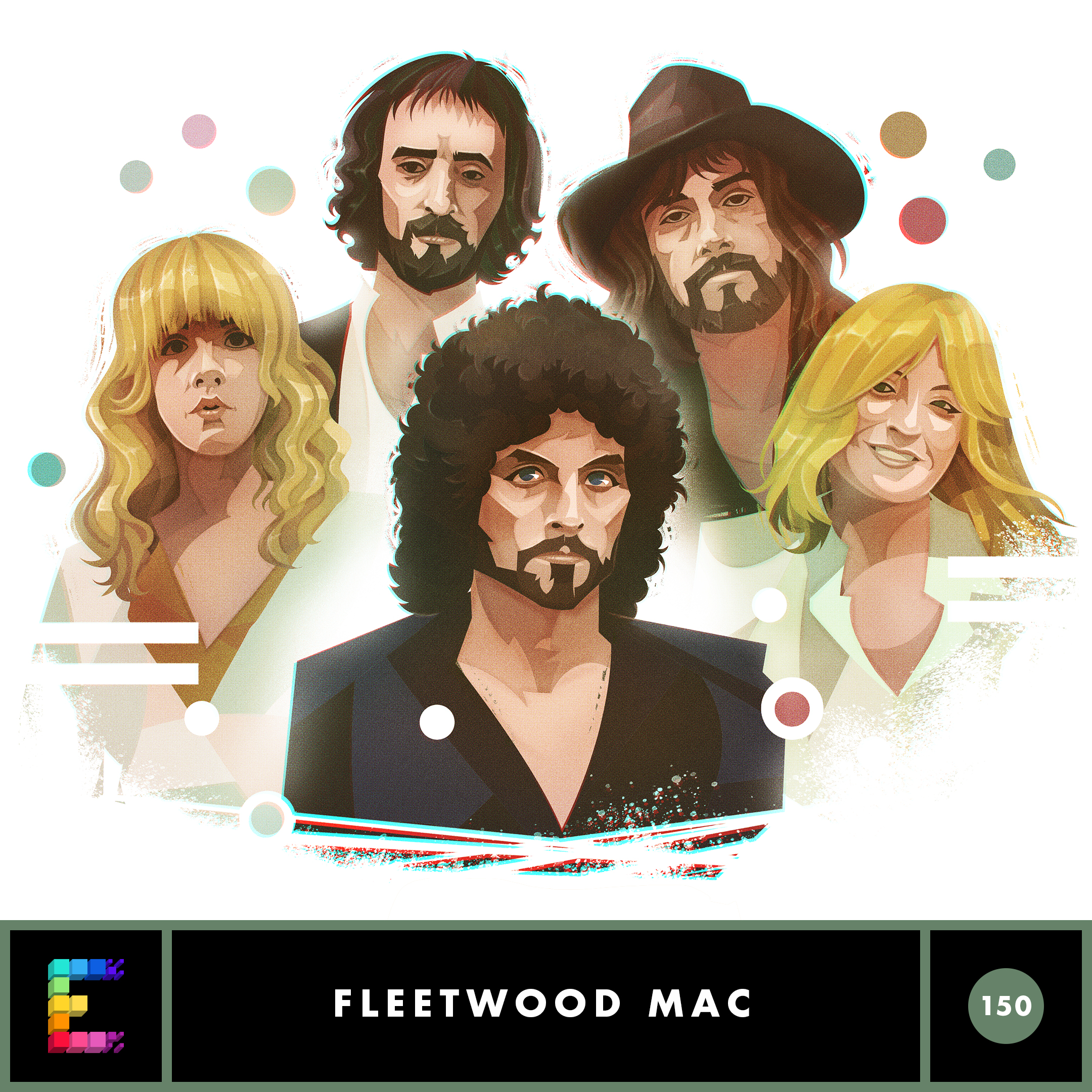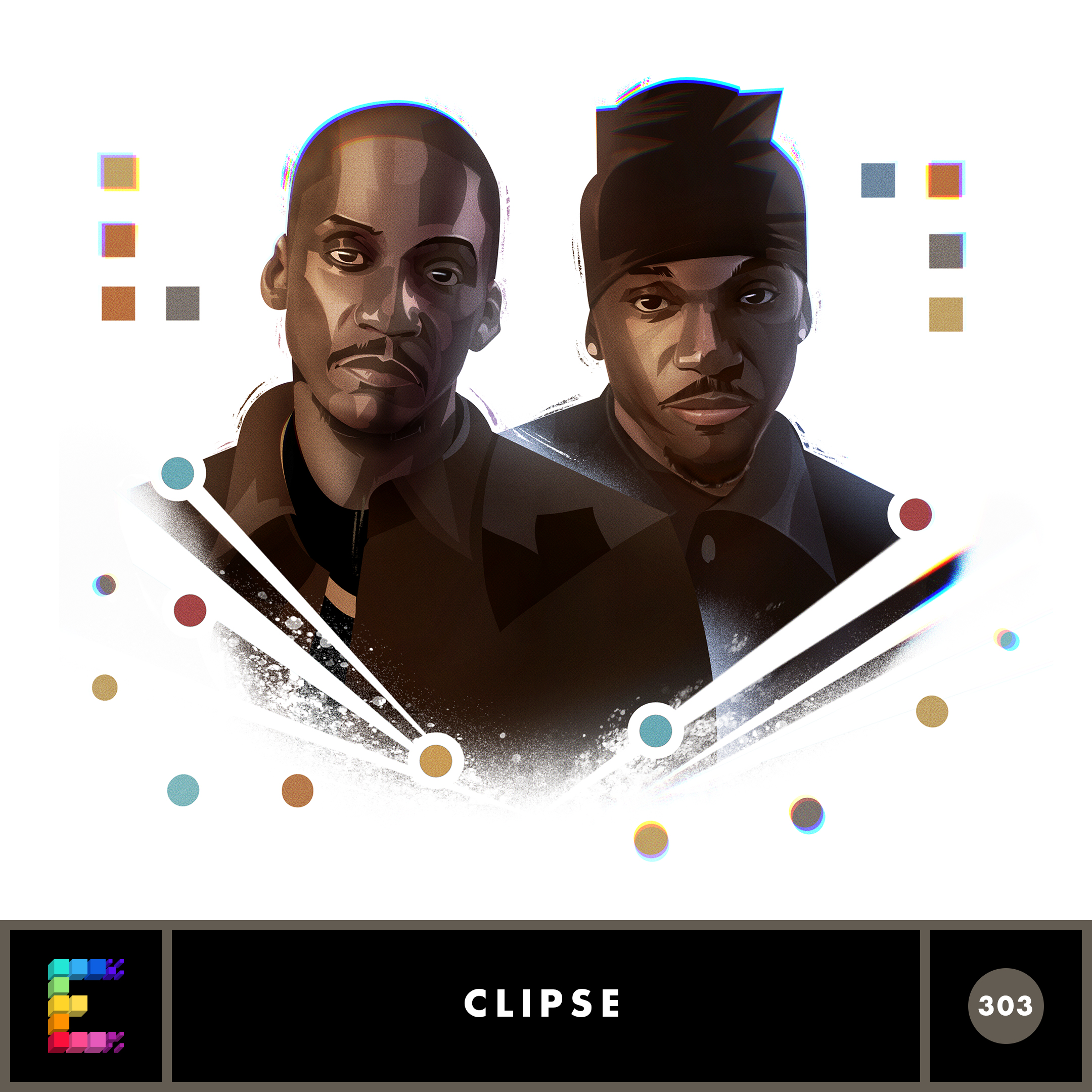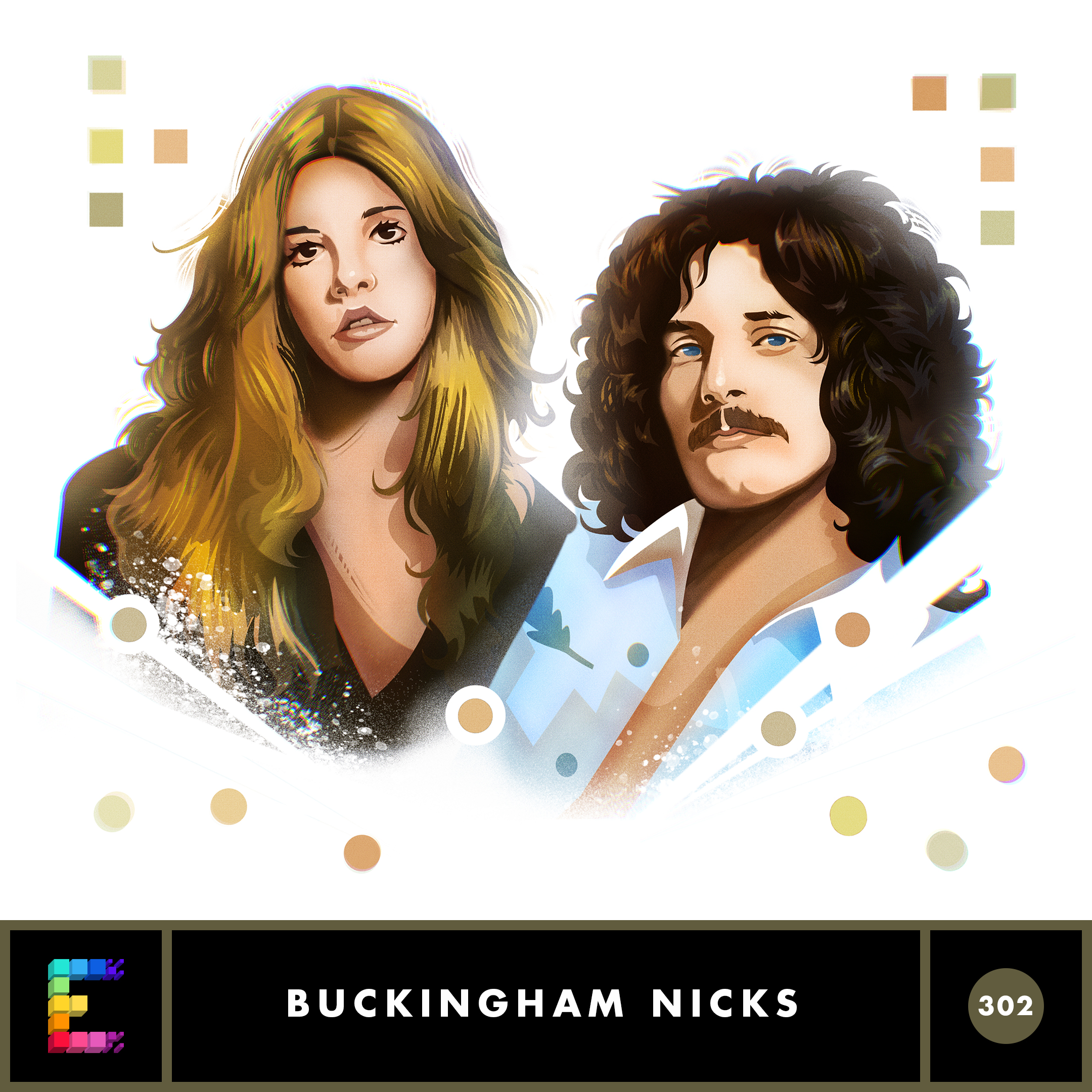Fleetwood Mac - Go Your Own Way
Next week, I’m going to be publishing an episode with Stevie Nicks and Lindsey Buckingham about the making of the song “Frozen Love,” from their only album as the duo Buckingham Nicks. That song is what eventually led to them joining Fleetwood Mac. So in anticipation of next week’s episode, I thought it would be great to go back seven years and revisit this Fleetwood Mac episode from 2018, about the making of “Go Your Own Way.” I hope you enjoy it, and I hope you’ll come back to hear the Buckingham Nicks episode.
-
Lindsey Buckingham is a singer-songwriter, a guitarist, and a producer. In 1974, he joined the band Fleetwood Mac, along with Stevie Nicks, his girlfriend at the time. A few year later, in 1977, Fleetwood Mac released the album Rumours, which would go on to sell over 40 million copies and become the eighth highest-selling album in history. In this episode, Lindsey Buckingham breaks down “Go Your Own Way," a song he wrote for that album about his relationship with Stevie Nicks.
For more, visit songexploder.net/fleetwood-mac.
Press play and read along
Transcript
You're listening to Song Exploder, where musicians take apart their songs and piece by piece tell the story of how they were made. I'm Rishi Kesh Hirway.
We get support from Sutter Health, where doctors and nurses care for 3.5 million Californians with breakthrough cancer treatments, advanced heart and brain care, and nationally recognized birth centers.
Sutter is bringing on new doctors and specialists to make getting care easier in more more communities across California. Learn more and find a doctor at Sutterhealth.org.
This episode is sponsored by Sonos. And if you haven't heard Sonos speakers connected to a TV, you're missing out.
I was traveling recently and I tried watching a movie on the hotel TV and I immediately realized how spoiled I am by having a whole Sonos home theater set up.
There's no comparison between the tinny built-in speakers on a TV and the immersive, rich sound that comes out of the Sonos Sonos soundbar and subwoofer and surround sound speakers.
So if you want to have an amazing sonic experience right in your own home, check out Sonos Speakers, Soundbars, and more at sonos.com.
Next week, I'm going to be publishing an episode with Stevie Nicks and Lindsey Buckingham about the making of their song Frozen Love from their only album as the duo Buckingham Nicks.
That's a song that eventually led to them joining Fleetwood Mac.
So in anticipation of next week's episode, I thought this week it would be great to go back back seven years and revisit the Fleetwood Mac episode that I made in 2018, episode 150, about the making of Go Your Own Way.
I hope you'll enjoy it, and I hope you'll come back next week to hear the Buckingham Nicks episode about Frozen Love.
Lindsey Buckingham is a singer-songwriter, a guitarist, and a producer. In 1974, he joined the band Fleetwood Mac, along with Stevie Nicks, his girlfriend at the time.
A few years later, in 1977, Fleetwood Mac released the album Rumors, which would go on to sell over 40 million copies and become the eighth highest-selling album in history.
In this episode, Lindsey Buckingham breaks down Go Your Own Way, a song that he wrote for that album about his relationship with Stevie Nix.
My name is Lindsay Buckingham. Stevie and I had done this album called Buckingham Knicks, and it had sort of made a little dent, but, you know, nothing to speak of.
And
one day we were working on new materials, Stevie and I at Sound City.
We were in the small studio in the back, and I went into Studio A where Keith Olson, who had worked on both Buckingham Knicks and later would work on the Fleetwood Mac album, the first one, he was playing a song from Buckingham Knicks, Frozen Love.
And here's this guy, Mick Fleetwood, just grooving out to the song.
I said hello and went back to work. And a couple of weeks later, Mick called and said, well, our guitar player, Bob Welch, is leaving.
Would you like to join Fleetwood Mac?
And I said, well, I'm not sure. But, you know, if I do join, you'd have to take my girlfriend too.
And so Stevie and I joined Fleetwood Mac in 74. That first album that we did came out in 75.
And it had actually done very well, much better than anyone could have predicted. And we had been on the road touring and we're talking about beginning to prepare for a second album.
We had this idea to take a break from the road and to rent a house for like a week or so in Florida and start working on some material for the album we know we're going to have to start in a few months.
The very first thing that got presented was Go Your Own Way. That was the first song that I wrote for the album that would become Rumors.
And really was the beginning of my having a dialogue with Stevie, who had been my lover and a musical partner pretty much through the time that the first album was made.
And we were sort of on again, off again, on again, off again. But by the time we got to Rumors, she had sort of split.
And Go Your Own Way was written almost as a stream of consciousness.
I was just chunking away on those chords and coming up with the lyrics to go with it. Loving you
isn't the right thing to do.
If you start with the first lyric, Loving You Isn't the Right Thing to Do, it sounds like you're beginning a conversation with someone.
There was nothing about it that was thought out, it was just the raw expression of the emotion behind the song.
How can I
ever change things that I feel?
I sort of was coming to terms with the fact that I may not be over this person,
and at the same time, I'm aware that I've got to accept what's happened and move on.
I don't think there was ever any worry in my mind about trying to mask who I might have been talking about. And really, in the case of Fleetwood Mac, I mean,
everything was so written on the sleeve, so to speak. I had broken up with Stevie at that point.
John and Christine McVie, who had been married, had broken up.
Three of those people were writers and were writing to each other.
So, I mean, usually if you break up with somebody and you want closure, you know, you're going to not see them for a long time or maybe ever.
And so there was this exercise of the making of rumors, especially where you had to kind of compartmentalize everything. Writing the song and singing it required me to do do that.
Tell me why
everything turned around.
Packing up,
jacking up something you want to do.
Initially, the song did sound very basically like that. I had not really thought about how to orchestrate it per se.
Most of that was done later when we actually got in the studio.
Mick had this bright idea of getting out of Los Angeles, almost an extension of the Florida idea, I suppose. Let's make it a working vacation or something.
So we went up to Sausalito. There was a record plant recording studio up there.
We rented a couple of places to live.
And, you know, again, that was sort of my final nail in the coffin with Stevie because I thought maybe she and I would find a place together and she was not into doing that.
But we settled in in Sausalito, and there was a song by the Rolling Stones that had a really great drum pattern that I thought would work over Go Your Own Way. The song is Street Fighting Man.
It's going from the snare
to the tom.
I said, Mick, I think this pattern going from snare to tom, snare to tom, not in the chorus, but in the verses, would be just great.
But Mick is someone who he's playing strictly from the heart and from the gut.
And as such, he just has to do what feels right to him. So when I showed him the pattern, he couldn't actually play it.
And finally, I'm just saying to him, look, I mean, is there a way you can paraphrase that to make it your own?
Which he does.
He opens up the kick and it keeps a 4-4 going on it. And instead of going from snare to tom, which felt wrong to him, he's playing the tom across the beat and letting the kick drum be the middle beat.
Then it came to the bass.
That was an interesting exercise for me as well, because John McVie is not someone who enjoys playing eighth note bass.
In fact, he's pretty averse to doing it. We started tracking it, and he was playing like a back and forth
thing.
And it was making the song sound sort of country. And I was like, I know you don't like this, but could you play an eighth note? And he was, he says, well, you're playing eighth notes.
So I said, Yeah, but that's really the point. You know, we don't want this to get too ornate.
In the verse, I think we just have to hold this tension where everyone's kind of holding it in, holding back,
waiting for that chorus to open up. Where, of course, John came up with that great melody line.
I'm playing all the guitars.
The objective was to try to get a few guitars to meld and sound like just one very extraordinary sounding guitar.
There is something that's dirtier and has less transience and less clarity.
And then there's something else which is going to be a little clean on its own,
which might be a little anemic if you were only using that, but then you put them together.
And that's just a technique of having a little bit richer landscape to work with.
With rumors, we were trying to make something rawr. We wanted to use a B3 organ in a more, shall we say, grittier way, not so much in a polished way.
Christine played the organ.
It was clearly a guitar song,
and I was not wanting her piano textures and her weaving around that she could do so beautifully. I just wanted to keep it very direct.
There's a lot of oomph behind the lead vocal in Go Your Own Way because there was a lot of resolve behind the subject matter.
I was feeling a lot of that subject matter as being something I was living.
And so it was a bit cathartic to get that vocal out. It was a way of exercising certain hurts.
You can go your own way,
go your own way.
You can call it another
lonely day.
As a kid, Stevie was uprooted repeatedly from her environment because her dad changed jobs and changed cities probably six or seven times while she was growing up.
But it also set kind of a life rhythm for her. I think she was uncomfortable having things go on too long.
And so there's a little bit of that observation in the chorus.
You can go your own way, but you can call it another lonely day because what happens ultimately is that you will continually find yourself being alone rather than pushing through to the next level with a particular situation.
The backing vocals on Go Your Own Way are very straight ahead. Once the lead vocal had been done, you know, then the three of us worked out just a triad.
You can call it another
lonely day.
Christine and Stevie were the other two voices. You can go your own way.
That's Stevie's. You can call it another
lonely day.
And that's Christine. And we work that blend to our advantage almost every time.
You can go your own way.
Go your own way.
The acoustic guitar part on Go Your Own Way almost didn't make it on the song.
It was was not something that I had preconceived going in.
And yet, as we lived with the track and as more things went on, I felt like there was something in the area of the counterpoint to the verse that was missing.
The verse vocals were sort of timed in a strange way, and I think that was what made me feel I needed something on the other side that was equally timed strangely to counterbalance as a call and response.
Otherwise, the verse vocal felt like it was dangling a little.
If I could,
baby, I'd give you my world.
Open up,
everything's waiting for you.
It was clearly the missing part.
It was also, ironically, a source of some disorientation
for the sense of the beat of the song.
Cut to months later. I was back in LA and I was in my car, and there was a DJ in LA back then whose name was B.
Mitchell Reed.
KFWB time of the B. Mitchell Reed Show, four after the R of 6.
KFWB temperature, right now. I was listening to him in the car, and he says, Hey, I've got the new Fleetwood Mac single for you now.
I'm going to put that on right now. And he plays it, and I'm sitting there grooving to it in the car.
Yeah. First time I've heard it on the radio.
He comes back on and he goes, that was the new Fleetwood Mac single. He takes a beat.
He goes, I don't know about that one.
And I was able to call up the station in that moment after hearing that and be put through to be Mitchell Reed. while a song was on.
And, you know, he got on the phone.
I said, hey, B, this is Lindsey Buckingham here. He's, oh, hi, Lindsay.
You just played my song, Go Your Own Way, and you said you weren't sure about it.
What didn't you like about it? He's saying, well, you know, I couldn't find the beat.
I went, oh, okay.
I mean, that was an element to Go Your Own Way, but obviously it didn't make any difference in the long run. I was proud of what I was hearing on the radio, and that's all that mattered.
Go Your Own Way really was the first song that kind kind of expressed acceptance of the fact that there was a bigger picture beyond my own needs and beyond our issues as two people.
Our sensibilities were so disparate. It was just a very unlikely group of people to end up in the same band.
And yet it was those differences that added up to something greater than the sum of the parts.
Coming up, you'll hear how all those ideas and elements came together in the final song.
Thanks to Function for supporting Song Exploder, I chose to work with Function because it's the only health platform that gives me data about what's actually happening inside my body, which is data that most people never get.
And with it, I get the insights to do something about it. One of the things I'm tracking is my omega-3 level, because my annual function test showed that my levels are actually pretty low.
Omega-3 is just one of the hundred biomarkers that gets tested.
But now I'm taking an omega-3 supplement, and in a few months, I'll take the follow-up test that's also included in my function membership so I can see how things have improved.
So learn more and join function using my Song Exploder link.
Function is a near 360 degree view to see what's happening inside your body and the first thousand Song Exploder listeners to sign up will get a hundred dollar credit toward their membership.
So visit functionhealth.com slash songexploder or use the gift code songexploder100 when you sign up so you can own your health.
Thanks to Quince for their support of Song Exploder, which is something I say every time I put on one of the two cashmere sweaters I have from Quince, which is often because they've both become staples in my wardrobe.
The cashmere stuff they have is great and it's way cheaper than what you would pay with similar brands.
Plus, they have everything from organic cotton shirts to accessories and they even have non-clothing items like bedding, travel accessories, and cookware.
By partnering directly with Ethical Factories, Quince cuts out the middleman to deliver premium quality at really reasonable prices. So layer up this fall with pieces that feel as good as they look.
Go to quince.com slash song exploder for free shipping on your order and 365 day returns. It's now available in Canada too.
That's quince.com slash song exploder for free shipping and 365 day returns.
That's quince.com slash song exploder.
I've done some film scoring, and so you can probably imagine that the way a movie sounds to me is really, really important. And that includes when I'm watching movies and TV at home.
And so a huge shout out to Sonos for their support of Song Exploder. I have a Sonos Arc Ultra soundbar connected to my TV, and then a subwoofer and two Sonos Era 100 speakers as surrounds.
I was playing a video game last night, and the music and the dialogue and the sound design all came to life in an incredible way through my Sonos system.
And then this morning I was sitting down and just playing a podcast on my phone, but I streamed that to my Sonos speakers too, because that's also something they can do.
And the fact that it's so easy to use and it's right there in my living room makes it feel like I have access to this beautiful sensory experience anytime I want.
And I want everyone to be able to experience listening to music and films and podcasts this way. So check out the range of soundbars and speakers and more at sonos.com.
And now, here's Go Your Own Way by Fleetwood Mac Mac in its entirety.
Loving you
isn't the right thing to do.
How can I
ever change things that I feel
if I could?
Maybe I'd give you my world.
How can I,
when you go take it from me.
You can go your own way,
go your own way.
You've been calling another
lonely day.
You can go your own way,
go your own way.
Tell me why
everything turn around
Packing up, checking up something you wanna do.
If I could,
maybe I'd give you my world.
Open up,
everything's waiting for you.
You can go your own way,
go your own way.
You can call it another
lonely day.
You can go your own way,
go your own way.
You can go your own way,
go your own way.
You can call it another
day,
not the only.
You can go your own way,
Go your own way.
You can call it another
day.
Visit songexploder.net for more on Lindsey Buckingham and Fleetwood Mac, including a link to buy or stream Go Your Own Way.
Lindsey Buckingham has a deluxe album spanning his career called Solo Anthology, The Best of Lindsey Buckingham, and I've got a link to that up on the site as well.
This episode was originally produced by me and Christian Koons, with booking help from Mac Burris and music clearance by Kathleen Smith.
The reissue of this episode was produced by me and Mary Dolan with production assistance from Tiger Biscuit. The episode artwork is by Carlos Lerma and I made the show's theme music and logo.
Song Exploder is a proud member of Radiotopia from PRX, a network of independent, listener-supported, artist-owned podcasts. You can learn more about our shows at radiotopia.fm.
If you'd like to hear more from me, you can subscribe to my newsletter, which you can find on the Song Exploder website. You can also get a Song Exploder shirt at songexploder.net slash shirt.
I'm Rishikesh Hiraway.
Thanks for listening.
From PRX.
Thanks again to Sonos for their support of Song Exploder.
I know I talked about how great their speakers sound, which is obviously the most important thing, but I do also want to mention how beautiful they look too.
So you don't have to compromise on either audio quality or visual beauty when you start putting Sonos speakers in your home. Check out sonos.com to see for yourself.
I want to tell you about a new Radiotopia podcast called Only If You Get Caught, a show about cheating scandals.
Some of the topics they cover include the Varsity Blues admission scandal, where wealthy parents tried to rig their kids' college applications, and the scandal in the WNBA, where an owner got fined for letting players fly on private jets.
What can cheating scandals teach us about the world? Listen and find out. Only If You Get Caught is from Defector Media and Radiotopia.
It's hosted by Patrick Redford and produced by Alex Sujong Laughlin. It comes out on October 21st, wherever you get your podcasts.





